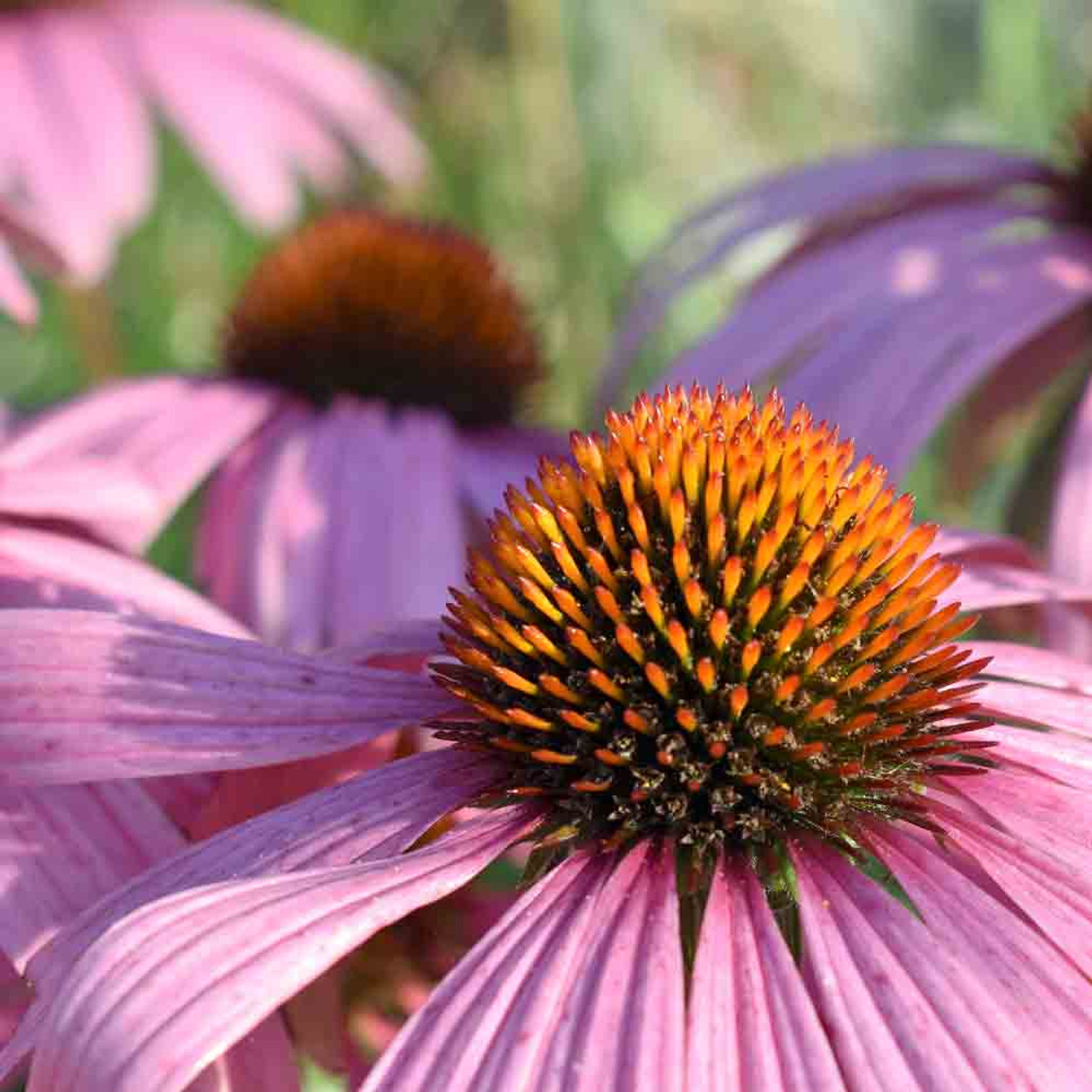

Place in your fridge for 60 days checking half way through to see if you need to add a little more water. Bright vibrant purple blooms make it a beautiful addition to gardens and prairies. You want your medium moist but not soggy. One of the most familiar coneflower species. When cold treating place your seeds in a baggies with a cup of peat or sand and add 1/4 cup of water. You can also start these early in pots, but if starting early you will need to cold treat them. These need light to germinate so sow on the surface and lightly dust with peat or compost. Includes seed pellets with purple coneflower seeds to cover 15 sq. You simply drop them on the ground, add water and let nature do the rest. Good for zones 3-12 Coneflower are best direct seeded after your first frost in the fall. Product Description: Sprinkle some bright blossoms throughout your garden with these inconspicuous pellets. We offer flat rate combined shipping on all orders, no limit on the amount or type of seed packets. These heirloom coneflowers are very easy to sow and create lavender petals on 36" stems. Prevention via insect control and weeding (especially removal of other daisy-like plants, such as dandelions) is quite helpful.Up for sale is one pack of 300 Purple Coneflower seeds (Echinacea purpurea). While not a fatal issue, it may cause unsightly foliage issues and is incurable remove diseased plants promptly to avoid spreading. Watering Details: Water regularly the first season while establishing, then only during especially dry, hot spells.įertilizer: Provide with about 2" of compost annually in early spring-too much fertilizer will cause the plants to become leggy.ĭiseases & Pests: Echinacea is rarely troubled by pests or diseases, though it may be susceptible to aster yellows. We have found about a 75 germination rate with no cold stratification from. Divide clumps every 4 years in early spring, only if they become overcrowded, making sure to keep a decent quantity of soil around the roots when moving, as coneflowers are taprooted and not easy to transplant. Pale Purple Coneflower seeds can be started in the fall, winter, spring or indoors. The bristly cone centers are wonderfully decorative, and offer up seeds for goldfinches later in the season, so as summer progresses stop deadheading to develop an abundance of ripe seeds. They handle hot summer weather with ease and are often cut and added to bouquets.

Placement & CultivationConeflower is a butterfly magnet and is welcome in borders with other summer bloomers, or added to meadow plantings for a natural look. Depending on the climate, it blooms throughout summer into autumn. Starting Outdoors: Direct sow in earliest spring or late summer to fall. Echinacea purpurea is an herbaceous perennial up to 120 cm (47 in) tall by 25 cm (10 in) wide at maturity. Initial temperatures of 40☏ for 3-4 weeks may increase germination rates, but not essential. Starting Indoors: Sow in late winter and keep at 60-65☏. The Purple Coneflower grow best in dry, average, and well-drained soil. They are at least 24-36 inches tall and 1 pound can grow and cover up to 5,000 square feet.
#Purple coneflower seed full#
For long-term storage, tuck seeds into the refrigerator in sealed jars. The Purple Coneflower (Echinacea purpurpea) seeds are grown in the full sun, which is at least 6 hours of sunlight per day, or half shade, which is at least 4 hours of sunlight per day. Preserving your Purple Coneflower Plant Store Echinacea seeds in a cool, dry place.
#Purple coneflower seed how to#
HOW TO GROW Echinacea pallida Sowing Instructions: Depth: 1/16" Loosen the soil in your garden using a garden fork or tiller to 12 to 15 inches deep, then mix in a 2- to 4-inch layer of compost.


 0 kommentar(er)
0 kommentar(er)
